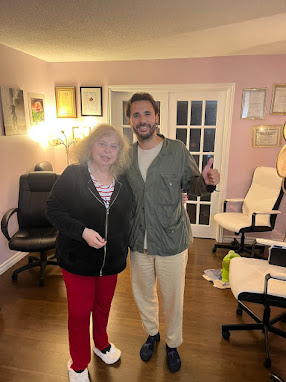Vocal Disorder. Speakers and Singers. Do you have what it takes to conquer your voice problem?
When the vocal disorder occurs, whether you are just a speaker, (regular person), or a singer, it is always a devastation to say the least.
For those who are not singers, it appears to be even more
devastating than to the actual singers who have lost their singing voice;
sometimes their speaking voice as well, and possibly, at least temporarily,
lost their singing career, which a lot of the times they have been working on all
their lives for. You would think that the process of voice recovery would be
easier for people who just lost their speaking voice, but interestingly enough,
it is exactly the opposite. The fact is that to recover your voice out of any voice or
vocal disorder, takes a lot of strength, a lot of energy, sometimes quite a bit
of time and money as well. It is a very tedious process, syllable on syllable
and word on word. Especially those with muscle tension or spasmodic dysphonia seem
to be suffering the most. They have drawn their voices in a very low position, starting
with the neck muscles and below.
During the process of the recovery of their voices, their
dysphonia is constantly sucking them back in in their necks, shoulders and
chests. I call it a “vocal swamp”, where like in a real swamp; the
person is desperately trying to swim out of, but being constantly pulled back
in. It could be extremely frustrating for the sufferer, as the muscles from
time to time are locking in on them and thus, not allowing the voice to come
out fully out of there and on the surface.
Sometimes, the voice does come out, but by their description,
it still feels like the muscles are tightening up which, in that case, the
feeling is only echoing back, and in that instance, the exhausted brain and
body are playing their nasty role on the sufferer. Now, what will it take to get better or, furthermore,
completely recover from this nasty voice injury? First of all, a lot of
understanding is what has happened and why. Second of all, a lot of
understanding of what requires coming out of that, so to speak, voice prison,
where the person ended up, voluntarily or not. And lastly, it requires a lot of
physical and mental strength to power the voice back to its regular state.
Yes, with singers, we have 2 things to do:
To recover their speaking voice first and then re-teach them
how to sing properly and not only complying with standards of professional
singing, but concurrently preserving their voices for the rest of their singing
careers. As strange as it sounds, and at the glance, it should be much harder
to work with the singers then just with ordinary people teaching them how to
speak again. However, those regular people with speech disorders never
have been facing before such an intense instruction, employing such a big
effort on the way to their voice recovery. On the contrary, the singers have
been through a lot of drills such as: rehearsals, performances, recordings and etc.
So, naturally, they are accustomed to all kinds of, so to
speak, drills and also accustomed to the hours of hard work on their craft. So
go figure, but that’s the fact and I derive this information from my practice with
ordinary people and singing professionals. The ordinary people with speech disorders
are, by far, more emotional and taking it much harder than the real troopers –
singing performers. And those are the facts from my extensive practice! The
process of voice recovery is definitely not for the faint of heart. Is it do-able though?
The answer is yes, but only if the sufferer will find their inner
strength to go through this ‘not very easy at all’ process.



